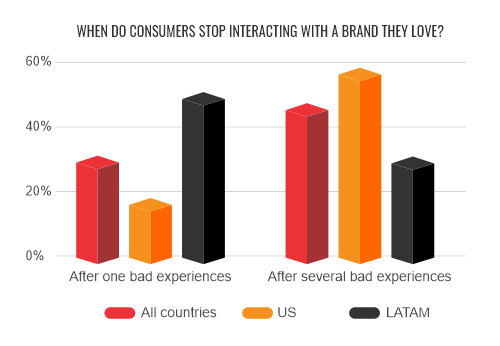Author’s Corner
In this white paper, Michael Carnahan, Assistant Vice President Client Services, explores the topic of relevant business relationships, how to build them, and why they are important.
Please click on the video to the right to learn more about the author, his paper’s key points, and his motivation for writing on this subject.
To discuss this white paper in more detail, please contact Michael using the information provided at the end of the article.
What are Client Relationships?

In all business, client relationships are all about the management of interactions with clients. Chittaie (2012) sees the management of these interactions as client relationship management that combines individuals, processes, and appropriate technology in a bid to develop and retain clients. At the end of the day, a business should be able to achieve a desired balance between the business’s investment and client satisfaction. People, processes, and technology are the cornerstone of how we serve our clients.
Notably, every stage in a client’s journey counts and shapes the relationship with our business. It is paramount, therefore, for every employee to take note of client relations in everything they do, no matter their job position. “Everyone sells and everyone operates,” can be heard frequently at successful organizations. Nurturing positive client relations should be the lifeblood of the business.
Consulting research by PWC (2017/18) indicates that 59% of clients in the U.S. will walk away from a business after a repeated bad experience. About 17% of them will walk away after a single bad experience.
In addition, 32% of the clients are willing to stop associating themselves with the brand they loved after one bad experience. A “brand” is not just for tangible items. The research clearly shows that every company has a brand, whether they sell products or solutions.
A possible Vee Healthtek brand -- a technology-enabled global business process solutions company that consistently delivers extraordinary outcomes to our clients. If we stop providing those extraordinary outcomes, we become just another vendor.
How Do You Build and Maintain Business Relationships with Clients?
Chittaie (2012) recommends four ways for quickly building and maintaining relevant business relationships with clients: Identify the client, attract the client, retain the client, and develop the client.
Client Identification
Building a business relationship with a client naturally begins with identifying the future client and making the introduction. For services, we typically target organizations which share our desire to improve healthcare. Most importantly, the clients must be treated as unique. Not all solutions fit all clients, a truth that is overlooked by many companies. Out-of-the-box solutions for clients simply do not work in today’s competitive market.
Client Attraction
How do you go about it? A number of methods apply, especially direct marketing. It’s proven effective in drawing clients to a business because clients are enticed to buy products through a variety of media, including social media, direct mail, telemarketing, and emails. A strong link between business development, marketing and sales is crucial for a high performing organization.
Client Retention
Retaining a client could be one of the most important pieces of the puzzle. The difficulty of doing so depends heavily on how satisfied the client is with the brand. In other words, businesses must evaluate whether client expectations have been met and how clients perceive the services provided.
Client Development
Developing the clients’ needs and increasing client engagement through valuable interactions is key. Through face-to-face encounters, phone calls, and governance, showing that you are part of the solution is indispensable.
What are the Benefits to the Business?
There is no limit to what happy clients can translate into for a business. Happy children are healthier. Happy pets live longer. Happy clients provide more revenue and referrals. That is how it works. The following are some of the many benefits happy clients bring to a business:
-
More sales: High client satisfaction stems from good client relations and superior client service, which directly influence the clients’ buying decisions.
-
High client retention: It’s common knowledge: It costs less to take good care of your existing clients and actually retain them longer than trying to attract new ones.
-
Client Lifetime Value (CLV) growth: The longer your client stays happy and loyal to your organization, the higher the CLV grows, and that means not just more business, but better business.
-
Increased brand ambassadors: There are no better brand advocates than your loyal clients. Sales is never enough for a business. Only those who go above and beyond to build relationships will be able to grow and thrive under any business conditions.
If your objective as a company is to increase sales in a short period of time, then building strong business relationships and maintaining them could prove impossible. In this model, building quality, relevant business relationships can take a back seat to marketing and sales efforts. A solid business, one that will stand the test of time, builds these relationships immediately and never stops building. People do business with those they like and trust. Trust comes from consistently delivering. Trust comes from building a relevant business relationship.
References:
Chittaie, R. (2012). Client Relationship Management and Business Strategies. Retrieved from https://www.academia.edu/7402861/CLIENT_RELATIONSHIP_MANAGEMENT_AND_BUSINESS_STRATEGIES [ Accessed: May 18, 2021]
Microsoft (2017). The State of Global Client Service. Retrieved from https://info.microsoft.com/rs/157-GQE-382/images/EN-CNTNT-Report-DynService-2017-global-state-client-service-en-au.pdf [ Accessed: May 18, 2021]
PWC (2017/18). Ingredients for great experiences. Retrieved from https://www.pwc.com/us/en/services/consulting/library/consumer-intelligence-series/future-of-client-experience.html [Accessed: May 18, 2021]

